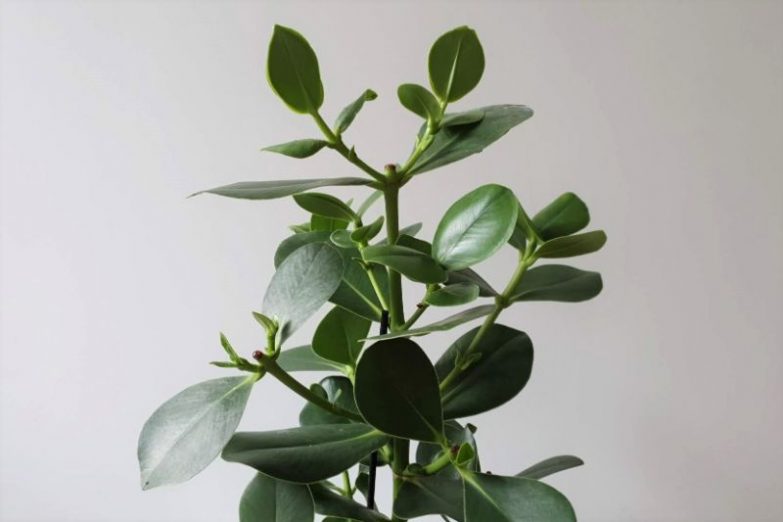Clusia rosea is a wonderful foliage plant, originating from the Caribbean and Central America. Its tough, dark green leaves and simple care requirements make this a plant that will thrive in most homes. This article will cover everything you need to know about Clusia rosea care, including how to prevent all of the common problems.
To provide good Clusia rosea care, place your plant in bright, indirect light, water to maintain consistently moist soil, and plant in very well-draining soil. Provide temperatures of 59°F (15°C) to 86°F (30°C), medium to high humidity, and fertilize monthly during the growing season.
Read on as I cover all aspects of Clusia rosea care in this article, explaining exactly what to do to ensure your plant thrives year-round.
Introduction To Clusia Rosea
Clusia rosea originates from Central America, the Caribbean, and can also be found natively in the southern United States. It is a fast-growing, resilient plant that is considered invasive in many regions.
It can grow to 25-30 feet outdoors in good conditions but is remarkably versatile indoors. Small, plants of only six inches can sit on a windowsill, or the plant can be grown to 6 feet or more, to make a statement in your home.
Their attraction lies in the large, deep green leaves, that can grow to over 6 inches in length, although they are typically smaller for plants grown in pots. The foliage is slightly shiny, and very attractive to look at, making it a popular foliage houseplant.
It rarely flowers indoors, except when given optimal light and growing conditions. Clusia rosea flowers with delicate white or slightly pink flowers that really add to the beauty of the plant. The resulting fruits shape and appearance inspired another of its common names, the Balsam Apple plant.
One interesting feature of Clusia rosea is the ability to write on the leaves, resulting in markings that are permanent and grow along with the leaf. This leads to Clusia rosea’s popular name of the Autograph Tree.
It has a fascinating life cycle, as a hemiepiphyte. This means that the seeds of Clusia rosea germinate and grow on top of other plants, most commonly in the canopy or on branches of trees. As the plant grows, it sends out aerial roots, which eventually reach the ground and take root in the soil.
Rather than being harmless to the plant it grows on, the roots of Clusia rosea often wrap around the host plant, restricting its growth and often causing it to die.
Clusia Rosea Care Summary
| Scientific Name | Clusia rosea |
| Common Name | Autograph Tree, Balsam Apple |
| Origin | The Caribbean, Southern United States and Central America |
| Light Requirements | Does best with plenty of bright light and some direct sun indoors. |
| Watering | Water once the top 1-2 inches of soil dries out. Clusia rosea prefers lightly moist soil but can tolerate short periods of drought. |
| Soil | Well-draining soil is a must for this epiphytic plant. Equal parts peat, perlite, and sand is ideal, but |
| Temperature | Will grow well in temperatures of between 59°F (15°C) to 86°F (30°C). Not frost tolerant and will stop growing in temperatures under 50°F (10°C) |
| Fertilizer | Monthly during the growing season. I prefer to use a balanced, water-soluble fertilizer, made up at half strength. |
| Humidity | Prefers medium to high humidity, but quite tolerant of a range of humidity levels. |
| Flowering | If given sufficient light will produce beautiful white or pink flowers in late spring or early summer. |
| Pruning | Fairly fast-growing and best pruned once or twice per year to promote a compact growth habit. |
| Propagation | Easily propagated by stem cuttings or seed. Stem cuttings can be grown in soil or water. |
| Re-Potting | It can become very root bound in only 1-2 years, so check annually and repot to ensure continued healthy growth. |
| Diseases and Pests | Not particularly prone to any diseases. The greatest risk is disease due to overwatering. Fairly pest resistant, but sap-sucking houseplant pests can sometimes cause issues. |
| Toxicity | Mildly toxic to humans and pets if ingested. |
| Where To Buy | Buy Clusia rosea online at Etsy (I buy most of my houseplants from Etsy). |
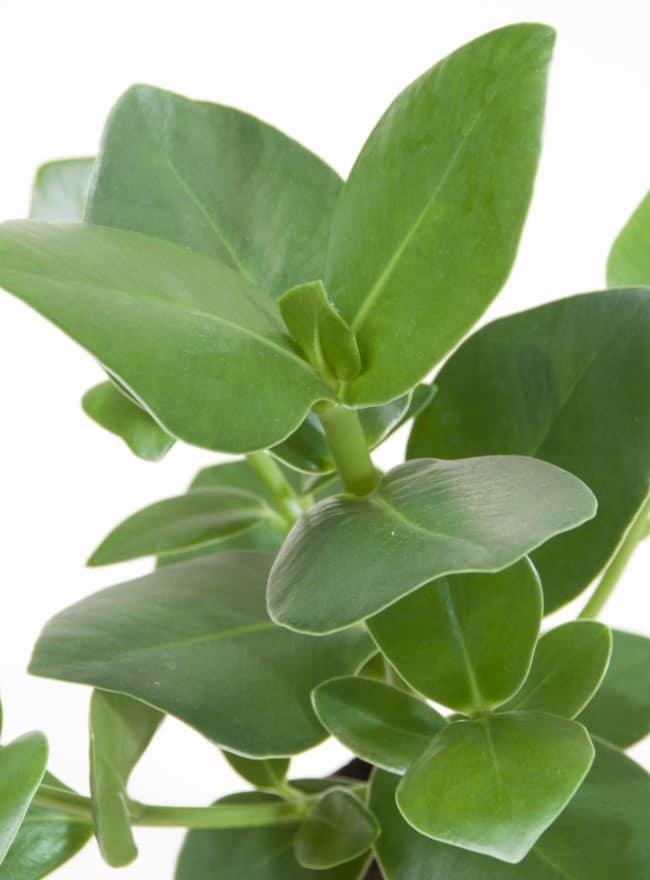
Clusia Rosea Care Video Guide
Here is a video I made that covers all aspects of how to look after your Clusia rosea (Autograph Tree). I show you how I’ve been looking after my plant, covering the essential aspects of care, as well as how to identify and fix common problems.
Light Requirements
When grown as a houseplant, Clusia rosea is best given mainly bright, indirect light. Outdoors, they can normally tolerate more consistent direct sunlight, as they acclimate to brighter conditions from a young age.
While this may seem unusual, it is because the plant acclimates to the intensity of available light. If you grow your plant from a young age in a south-facing window, it will develop a tolerance to strong direct sunlight.
However, if you move your plant from lower light to a position in direct sunlight, it is unlikely to be able to acclimate quickly enough. This will result in leaf scorching, and brown leaf edges and tips.
Indoor lighting tends to much more variable, and the plants tend to spend more of their time in lower light conditions. For this reason, they are more likely to experience leaf burn when given too much direct sunlight.
I tend to move my plant to a south-facing window in the autumn and winter, to maximize available lighting, and move it to a west-facing window in spring and summer. This ensures plenty of light all year round, without damaging the beautiful foliage.
How To Water Clusia Rosea
Clusia rosea prefers to be kept in consistently moist conditions, but it won’t tolerate being overwatered. You should water your Clusia thoroughly once the top 1-2 inches of soil have dried out. Continue to add water until water flows out of the bottom drainage holes.
I normally take my plant to the kitchen sink to facilitate this. Leave the plant to drain for a few minutes before returning it to its cachepot or drip tray. This will ensure the roots at the bottom of the pot are never sitting in water.
Clusia rosea care isn’t impacted significantly by the type of water you use, so tap water is fine. The main thing to avoid is overwatering. This results in prolonged soggy soil, reducing root aeration, which will soon be followed by root rot.
Don’t forget that anything that slows the rate of soil drying can cause root rot. Planting your Clusia rosea in poorly draining soil, a pot that is too big for the plant, or if your pot does not have sufficient drainage holes.
Water requirements will change massively during the year, with winter water requirements much lower than when the plant is growing quickly in the brighter, warmer conditions of summer. For more tips on knowing when to water Clusia rosea and other houseplants, check out my article covering when to water indoor plants.
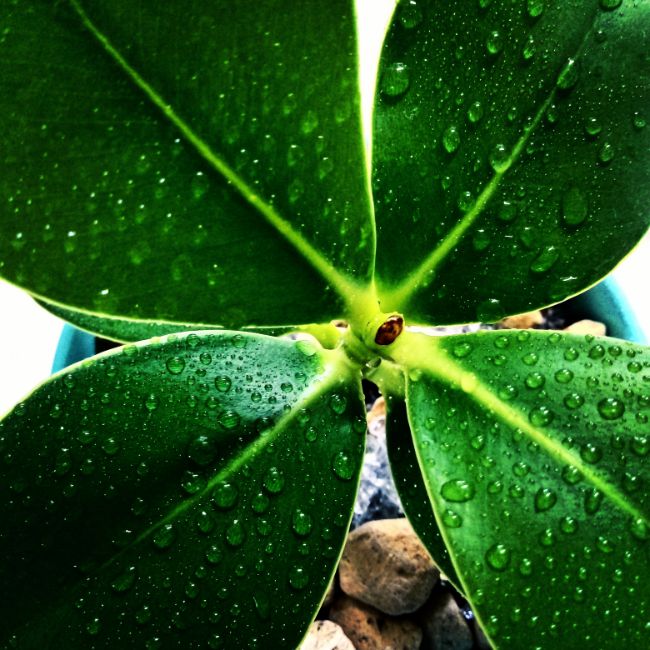
Temperature Requirements
Your Autograph Tree will be happy as long as your home is kept between 59°F (15°C) to 86°F (30°C), so this shouldn’t be an issue. The only things to watch for are either hot or cold drafts. Clusia is not cold tolerant, so a cold draft next to a window or air conditioning unit can result in a very unhappy plant. Similarly, hot drafts can lead to brown leaves and leaf drop.
Soil Requirements
Fast-draining soil is essential for good Clusia rosea care. It is used to growing as an epiphyte, on top of another plant, rather than having its roots under the soil. Roots need to breathe, and epiphytes are more sensitive to poor root aeration than most other plants.
If you put your Clusia rosea in heavy, poorly draining soil, the best you con hope for is a languishing, unhappy plant, and you will likely see root rot first-hand before long.
If your Clusia rosea is happy and healthy when you buy it, there is no need to repot urgently. It is perfectly ok to let your plant stay in this pot until it is showing signs of being root-bound.
When it is time to repot, or if you would prefer to repot your plant after purchase, a mix of peat, perlite, and coarse sand produces a fast-draining soil, that still retains enough moisture to keep your Clusia rosea happy. Another good option is a 50/50 mix of peat and orchid mix, which produces an exceptionally well-aerated environment for your plant. See my article on choosing and making houseplant soil for more info.
Fertilizing Clusia Rosea
Your Clusia rosea is fairly tolerant to lower nutrient availability but will do much better when given a suitable amount of fertilizer. I use a balanced formula (containing equal amounts of nitrogen, phosphorus and potassium) once per month while my plant is actively growing.
The aim is to prevent nutrient deficiency, rather than to overload your plant with nutrients. Plants get their food from the sun. Fertilizer is a bit more like a multivitamin – A little goes a long way.
If you are using a general-purpose fertilizer, I recommend making it up at half the recommended strength as for outdoor plants. Indoor plants in pots typically grow slower and are more at risk from fertilizer salt build-up in the soil, so a lower dose is strongly recommended.
There are loads of different options for fertilizing your Clusia rosea plant. Some prefer more natural and longer-acting organic fertilizers, but you can safely use what you are comfortable with, as long as you don’t overdo it. Read my article about fertilizing indoor plants to learn everything you need to know about this topic.
Humidity
Clusia rosea will do best in medium to high humidity levels, but will even do ok in lower humidity too. The plant is quite resilient, and doesn’t suffer too many of the foliage problems that other houseplants do in low humidity conditions.
If you see leaf curling or brown leaf tips, it may be a sign of low humidity. I like to use a digital hygrometer to monitor the humidity levels in my home, so I can respond to low humidity before my plant start suffering. For the best Clusia rosea care, I normally aim to keep humidity levels above 40%.
If you need to increase humidity for your plants, then simple things like grouping your plants or using a humidity tray work reasonably well. Misting houseplants to increase humidity is a common practice, but it really has very little impact on humidity levels and can lead to disease problems in some susceptible plants. If you’d like to read more about the best ways to increase humidity for your plants, check out my article on this topic.
Flowering
Clusia rosea flowers readily as an outdoor plant, but the blooms are harder to produce indoors, usually due to lower light conditions. To give your plant the best chance, ensure plenty of consistent, bright light, and pay attention to watering and feeding your plant appropriately.
Clusia rosea produces beautiful white flowers with pink detailing in summer. They normally last several weeks, closing in the heat of the day and opening at night. The fruits produced by Autograph trees are fleshy green balls that look a little like apples. These darken to black as they ripen, before opening to reveal bright red seeds.
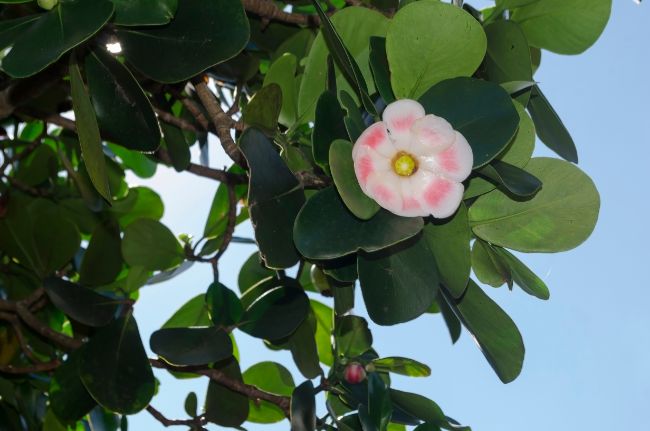
How To Prune Clusia Rosea
Pruning is an important aspect of Clusia rosea care, as it a fast-growing plant, and it has a tendency to get a little leggy, particularly when grown inside. Pruning helps to maintain the size and shape of your plant and is best done while it is actively growing.
I normally prune Clusia rosea twice per year, doing a more major pruning in early spring, before rapid growth starts. I then tidy the plant a little in autumn, to keep it looking well over the winter.
- Use clean pruning tools. Ideally use rubbing alcohol or sterilize in boiling water before pruning, to reduce the risk of disease.
- Cut stems back just before a leaf pair, as this will encourage stem branching and help the plant to develop a more bushy, compact habit.
- Prune back by up to a third. Although resilient, pruning more than this can hamper new growth.
- Read more houseplant pruning tips in this article.
How To Propagate Clusia Rosea
Clusia rosea is easy to propagate from stem cuttings, although you can also grow it easily from seed. A simple 4-6 inch long stem cutting with several leaves on it will root readily in water or soil.
- Prepare a pot with suitable potting soil. Ideally an equal mix of peat, perlite, and coarse sand.
- Make sure the soil is evenly moist.
- Prepare small holes for your cuttings. Using a pencil is a good option to create holes that you can easily insert the cuttings into the soil without risk of damage to the cutting.
- Take your cutting and gently insert them into the holes.
- Gentle firm the soil around the cuttings to support them.
- Cover the pot with plastic, to create a highly humid environment, which will improve rooting success and prevent the cutting from drying out.
- Try to place the pot in a warm place, in bright, indirect sunlight. Check the soil every few days to ensure it remains lightly moist.
- Within only a week or two, the plants will have developed plenty of roots and you can remove the plastic covering and proceed with normal care.
You can even grow a grown Clusia rosea directly in water, and when grown in a vase, can make a very attractive and interesting display.
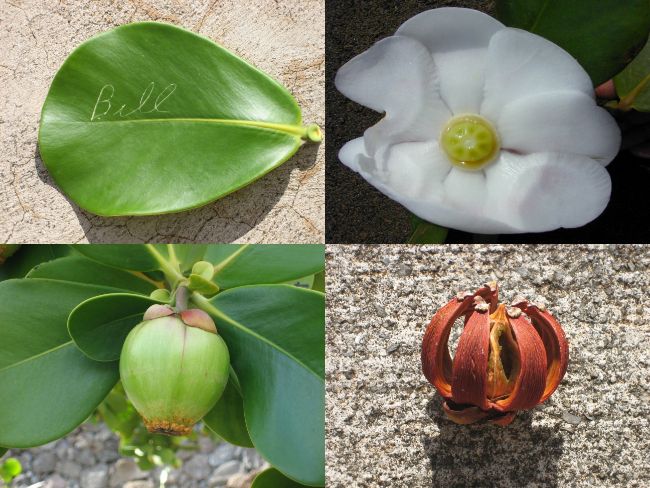
Repotting Clusia Rosea
Clusia rosea is one of the faster-growing houseplants, so you will need to monitor it to see when it needs to be repotted. Keeping your plant in a smaller pot can help to limit its size if you would like a smaller plant, but being severely root bound will affect the health of the plant.
Look for roots growing out of the bottom drainage holes and for evidence of the plant needing watered much more frequently than before as signs of needing repotted.
When choosing a new pot, only increase the pot size by 1-2 inches at a time. Putting your Clusia rosea in a pot that is too large causes the soil to remain very wet for a long time after watering, and can increase the risk of overwatering problems.
- Gently remove your plant from the old pot.
- Remove excess soil and gently loosen the root ball, taking care not to damage any of the roots.
- Assess for any signs of unhealthy roots, which will be mushy, brown, or black, and may have a bad smell. These should be removed with sterile pruning shears.
- Prepare the new pot for the plant by adding a small amount of suitable potting mix. Place the plant in the new pot, checking that the height of the plant in the pot is right.
- Backfill the pot with soil and gently firm it to support the plant.
- I normally recommend lightly watering Clusia rosea after watering. Don’t soak the soil completely. Just add enough water to dampen the soil a little. The reason for this is that the disturbed roots will be less able to absorb water, as the plant recovers from the shock of repotting.
- Make sure the conditions for your freshly repotted plant are ideal after repotting, to let the plant recover. Bright light, rather than direct sunlight is best for a few weeks after repotting.
Diseases And Pests
Thankfully, Clusia rosea care is not often affected by pests or disease. Sap sucking insects such as scale, aphids, mealybugs and spider mites can sometimes cause problems, but are rarely fatal for this resilient plant.
Inspect your plant regularly for any signs of pests and remember to quarantine any new plants you bring into your home, as you never know when pests will hitchhike in on your newest purchase.
If you do find pests on your Clusia rosea, read this article for help identifying and treating them.
The main cause of disease for Clusia rosea is overwatering. Opportunistic anaerobic bacteria and fungi will strike in waterlogged conditions, resulting in root rot, and a high likelihood of the plant dying. If you spot the problem early, check out my article on how to fix an overwatered plant for some tips, or see this article about identifying and treating root rot.
Aside from root rot, Clusia rosea isn’t particularly prone to other common houseplant diseases.
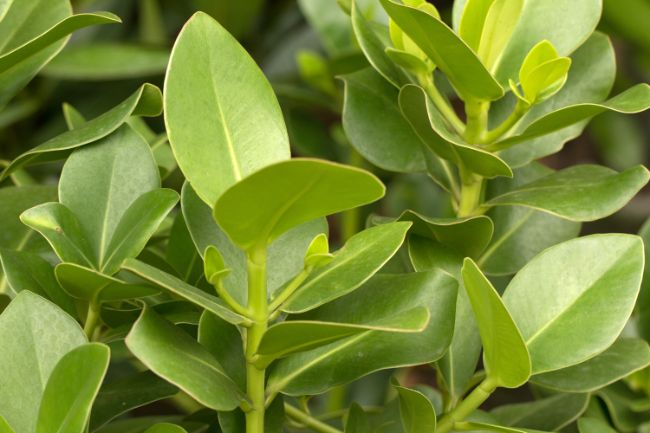
How Fast Does Clusia Rosea Grow?
Clusia rosea is one of the faster-growing houseplants and can grow by up to 12 inches per year when given optimal growing conditions. It can become leggy when grown indoors, so regular pruning is a good idea to keep it to your desired size and shape.
Why Does My Clusia Rosea (Autograph Tree) Have Yellow Leaves?
Yellow leaves are one of the most common problems with Clusia rosea care, and it is most commonly caused by overwatering. This often starts with the lower foliage first, but will eventually spread to all the leaves. Check the soil and the roots for signs of root rot, and follow these steps to fix an overwatered plant.
Other causes of yellow leaves on Clusia rosea include excessive light, causing leaf scorching, low light, causing stunted growth and eventually leaf yellowing, or problems with too much or too little fertilizer.

